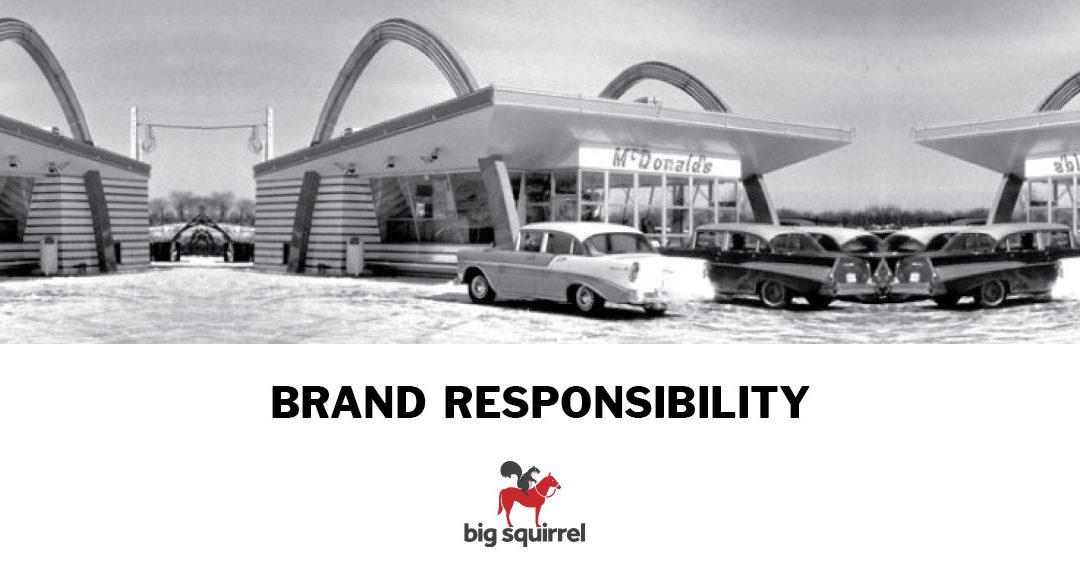
by bigsquirrel | Sep 18, 2013 | Innovative Brand Research
What is the role of a brand when it comes to responsibility?
And we aren’t just talking about social responsibility and environmentalism, but the kind of responsibility that’s about helping consumers make good – or better – choices.
McDonald’s is at an interesting brand to consider when it comes to responsibility. For a brand that does so much good in the world – from the Ronald McDonald House to the Global Women’s Initiative – it is hard to believe that this same company also sells (gulp) fast food that has been accused of contributing to our country’s growing problem with obesity. Questions concerning responsibility are becoming more complicated. Should a fast food chain be held accountable for a problem it didn’t necessarily create? Or for that matter, should the brand be blamed for contributing to social issues just because the products it sells are unhealthy? Is McDonald’s any more guilty of promoting an unhealthy lifestyle than brands like Captain Crunch or Hershey’s? Where do we draw the line and who draws it when we begin to think about and debate brand responsibility?
McDonald’s is clearly thinking about this and has taken significant steps to respond to the growing trend of healthy living. They’ve expanded their product offering to include more health-conscious options like salads, milk, and apple slices. But, is this enough? Or are we to believe that the good they do as a company is enough to make up for selling fatty Big Macs?
For our first brand case study, we decided to explore the role of brand responsibility by taking a closer look at how McDonald’s is walking the line.
There are 6 key things that McDonald’s does that enables the company to give customers what they want (amazing french fries) while maintaining a sense of social responsibility:
1) MCDONALD’S MAINTAINS A HIGH LEVEL OF TRANSPARENCY THAT BUILDS TRUST WITH
CONSUMERS AND EMPLOYEES.
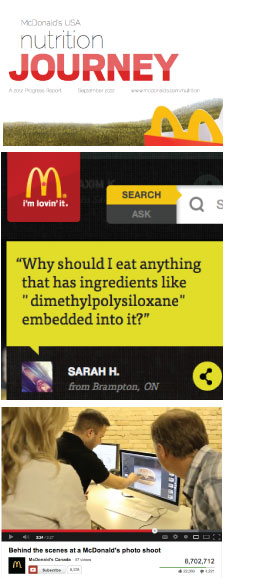 Example: Nutrition Progress Report
Example: Nutrition Progress Report
In 2012, McDonald’s published its first ever nutrition progress report, revealing the company’s nutritional performance over the past year. The report is easily accessible online to anyone who is interested. For the report, McDonald’s hired Ernst & Young LLP to conduct an independent examination of McDonald’s progress against its commitment goals. The report highlights focus on three key nutrition commitments: Children’s Well-being, Nutritionally Balanced Menu Choices, and Nutrition Information and Education.
Read more directly from McDonald’s here.
Example: Our Food. Your Questions.
In 2012, McDonald’s opened up communication lines with the social media campaign and website called “Our Food. Your Questions,” that allows customers to submit queries to McDonald’s Canada, which then answers some of them with videos.
One result of this campaign is a very honest, behind the scenes look at why a McDonald’s burger in an advertisement looks so different than one a consumer purchases in the restaurant. With this kind of open communication present, consumers instill more trust in the brand.
See the YouTube video here.
2) MCDONALD’S MAINTAINS AN OPEN AND FLEXIBLE FRAMEWORK THAT HONORS LOCAL PREFERENCES.
Example: Global Parents’ Table
McDonald’s established a global Parents’ Table in March, 2012. The membership is comprised of 10 parents and dads from the U.S., U.K., Australia, France, Spain, Brazil, Mexico and Taiwan. McDonald’s met with the Parents’ Table twice to focus on how the company can play a positive role in children’s well-being.
Read more directly from McDonald’s here.
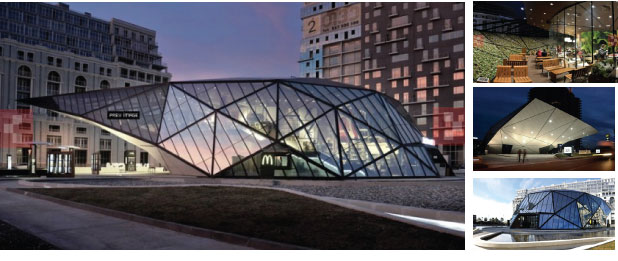
Example: Giorgi Khmaladze designed space in Georgia
McDonald’s embraced a design by architect Giorgi Khmaladze in Batumi, Georgia, leaving behind cues that are commonly associated with the restaurant. The result is a stunningly modern space that takes brand into an entirely new space and creates a new experience for the average McDonald’s customer:
On the inside there is a creative use of space, semi-private seating, beautiful wood paneling, and what appears to be some sort of grass field in the upper part of the building (where it is the most tapered). The grass area is actually an elevated garden with huge skylights, so people can eat small, rectangular apple pies with a natural backdrop and lot of sunlight.
Read more about the McDonald’s of the future on geek.com and on PSFK.
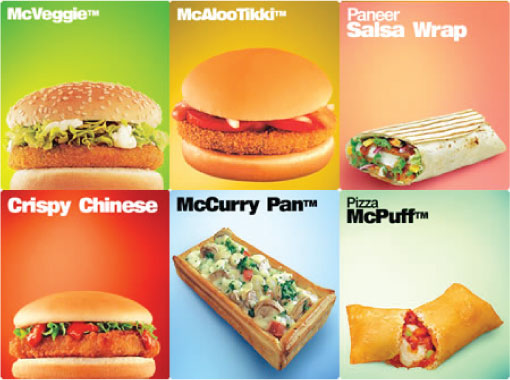
Example: Regional menu items
McDonald’s doesn’t simply duplicate local cuisine, rather the corporation puts a “McDonald’s twist” on it, creating menu items that incorporate local flavors but that maintain a sense of consistency and fit the brand. McDonald’s maintains a sensitivity to local customs and preferences and creates menu options using local suppliers. For example, when they introduced the Parmigiano Reggiano burger in Italy, they formed an alliance with the official Consortium of Parmigiano-Reggiano, made up of 650 small, artisanal cheese producers in Northern Italy.
Read more directly from McDonald’s here.
3) MCDONALD’S IS IN TOUCH WITH THE NEEDS AND VALUES OF CONSUMERS ACROSS THE GLOBE.
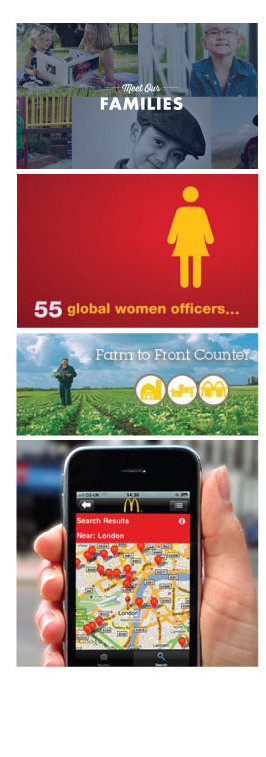 Example: Ronald McDonald House Charities
Example: Ronald McDonald House Charities
The mission of Ronald McDonald House Charities (RMHC) is to create, find and support programs that directly improve the health and well being of children. The House program provides a “home-away-from-home” for families so they can stay close by their hospitalized child at little or no cost. McDonald’s Corp. is the largest corporate donor and McDonald’s employees are dedicated volunteers. Owners / operators participate in local and global RMHC board.
Example: Global Women’s Initiative
Supports the recruitment, development, and advancement of women at all levels of the company while creating a culture where women have the opportunity to succeed and grow.
Watch the YouTube video here.
Example: 5 sustainability focus areas
McDonald’s sustainability efforts expand beyond just the environment and into general well-being. The overarching goal of McDonald’s sustainability efforts is focused on continuous improvement through five focus areas: Nutrition & Well-Being, Sustainable Supply Chain, Environmental Responsibility, Employee Experience, and Community.
Example: Mobile Payment App
McDonald’s is currently testing a new mobile app that lets customers order via mobile phone and pick up food in stores, curbside or at drive-thru windows. As we move closer to a cashless society, McDonald’s is looking for ways to incorporate new technologies into the brand experience.
4) MCDONALD’S MASTERFULLY BALANCES VALUE (BUYING) AND EXPERIENCE (SHOPPING).
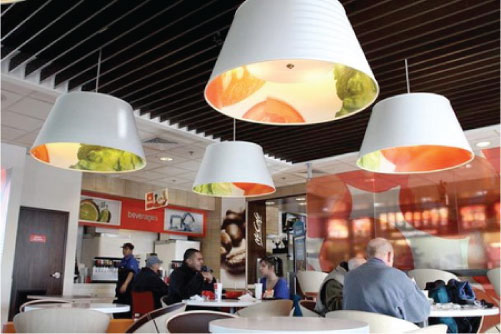
Example: McDonald’s restaurant remodel
McDonald’s recognizes the importance of creating an experience that matches the direction in which the brand is headed. By beginning a $2.9 billion remodeling effort in 2012, the brand hopes to “gain broader acceptance for top-tier times that are already on the menu like smoothies and Angus burgers and to better compete with the fast-casual industry.”
Keeping pace with the changing lives of consumers, “the company is moving to seating “zones”: slow zones for coffee sippers enjoying the Wi-Fi, fast zones at high bar tables for single diners wolfing down a sandwich and family zones with booths for parents to “lock” their children on the inside to prevent them from wandering.”
This remodel effort combines McDonald’s value with the quality and comfort of a higher-end restaurant, creating a better overall brand experience.
Read more about McDonald’s remodel in the Chicago Tribune.
5) MCDONALD’S EMPOWERS EMPLOYEES AND CUSTOMERS TO BETTER THEMSELVES.
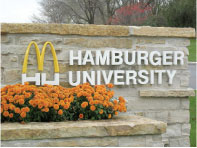 Example: Hamburger University
Example: Hamburger University
In 1961, McDonald’s founder Ray Krocs launched a training program, later called Hamburger University, at a new restaurant in Elk Grove Village, Illinois. There, franchisees and operators were trained in the scientific methods of running a successful McDonald’s. Hamburger U also had a research and development laboratory to develop new cooking, freezing, storing and serving methods. Today, more than 80,000 people have graduated from the program.
Example: Diversity Curriculum
McDonald’s has developed an internal “diversity curriculum” that teaches employees how to move from awareness to action in the area of inclusion and intercultural management.

The courses include:
Asian Pacific Middle East Career Development
Black Career Development
Hispanic Career Development
Lesbian Gay Career Development
Women’s Career Development
Intercultural Learning Lab
Read more about McDonald’s diversity program in Forbes.
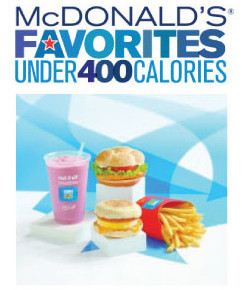 Example: Menu expansion
Example: Menu expansion
McDonald’s strives to help consumers make more informed choices. Over the past few years they have expanded the menu to include low calorie items like smoothies, egg whites on breakfast sandwiches and the sandwiches that include cucumbers and other vegetables. According to McDonald’s CEO Don Thompson, the chain’s best known items, such as Big Macs, fries and chicken nuggets, account for just 25 percent of the chain’s sales.
In 2012, McDonald’s introduced a “Favorites Under 400” menu that highlights the calorie information for items to help put calorie counts into context for customers. They company also promised to list calorie counts on restaurant and drive-thru menus.
McDonald’s is also introducing a voluntary nutrition e-learning program for their employees to help build employees’ knowledge of calories, nutrition and McDonald’s menu offerings.
Read more about McDonald’s and nutrition in the Chicago Tribune.
6) MCDONALD’S GIVES CONSUMERS CONTROL BY ENABLING THEM TO MAKE INFORMED DECISIONS.
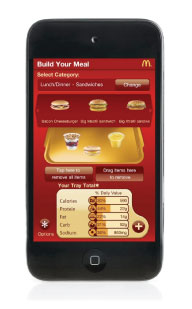 Example: My Meal Builder & McDonald’s App
Example: My Meal Builder & McDonald’s App
McDonald’s enables customers to access nutritional information quickly and easily for all of McDonald’s food and beverages through their app and website. Consumers can create and tailor meals that suit their individual needs using the My Meal Builder feature on the website. McDonald’s has also begun including calorie information on their overhead menus and drive-up menus.
What role do you think brands should play in influencing the decisions we make as consumers?
We’d love to hear your thoughts.
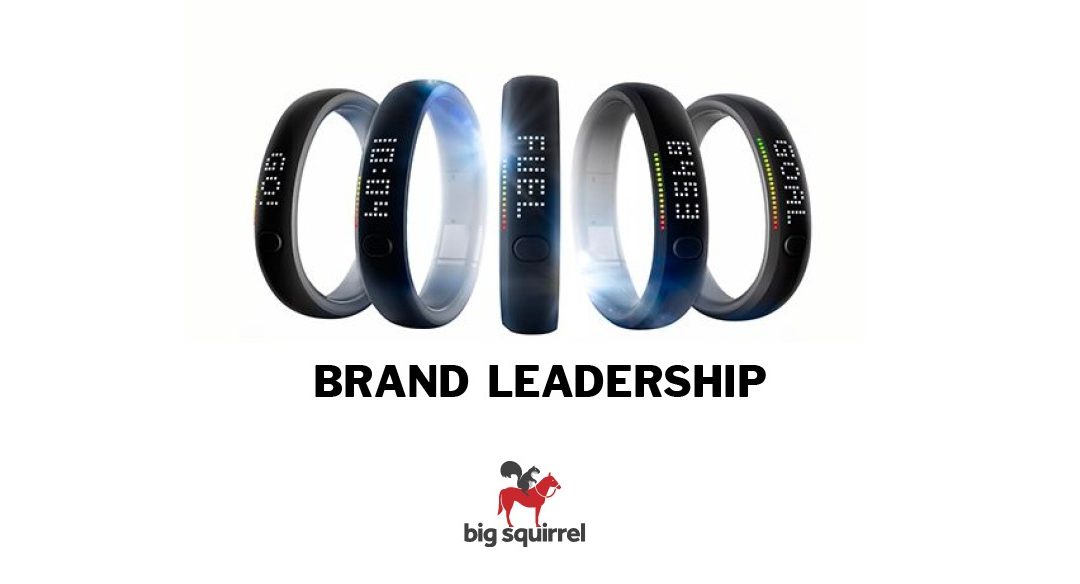
by bigsquirrel | Jun 12, 2013 | Innovative Brand Research
We have been working with Studioriley on a project for Samsung to explore the changes that are happening in the world that affect our work as brand strategists. As part of this collaboration, we’re taking a deep dive into the world of brand leadership to explore what it’s all about in 2013.
Here’s a snapshot of what we have learned:
People have new expectations for what they want from a brand. As individual aspirations have become more personalized, so too have brand expectations and experiences. Brands have had to evolve how they connect with this hyper-networked and globally aware audience, who have an increased self-understanding, changing ambitions and improved tools for pursuing and attaining them.
One significant change: brands no longer have permission to set the standards for what is good or bad for the masses. Instead, evidence shows that people want to express their own unique values and do so in the form of voting, endorsing, “liking” and sharing.
Brands are expected to support and facilitate this shift, helping consumers turn their aspirations into realities by providing information to help them understand and achieve. In an era of information overload, it is important to point out that people aren’t looking for more information, but rather tools that organize and apply information in a way that helps them take action. Information is only valuable in this digital culture when it helps people realize their dreams.
Brand leaders have 5 new actions that demonstrate they support the values of the consumer and enable dreams…
1) BRAND LEADERS SUPPORT CONSUMER VALUES BY ENCOURAGING THOUGHTFUL CONSUMERISM AND RESPONSIBILITY.
In an increasingly connected world, a growing class of global citizens share concerns over issues affecting everyone in the Majority World, from climate change to poverty. Brand leaders are promoting thoughtful consumerism and responsibility by encouraging people to be more aware of how their actions and purchases impact society and affect the environment on a global scale.

Example: Patagonia
By encouraging people to be more thoughtful about their purchasing power and how it impacts the environment globally, Patagonia demonstrates they are part of the human collective, behaving as thoughtfully and responsibly as consumers themselves.
2) BRAND LEADERS SUPPORT CONSUMER VALUES BY FACILITATING NEW WAYS TO WORK.
Who works, where people work and how they work has continued to change rapidly. There is an increased female presence in the workforce, along with an aging population who are delaying retirement. Traditional ideas of what work is or where it is to be done are fading as brand leaders fuel a more collaborative, plugged-in and dynamic workplace; here, productivity and creativity are seamlessly integrated and are no longer thought of as mutually exclusive ideals. Brand leaders have developed new media and technologies that encourage the pursuit of individual aspirations at home and at play, and have begun to encourage these same pursuits at work as well.
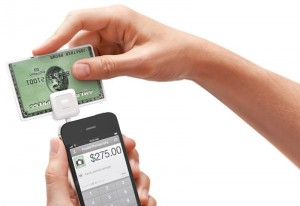 Example: Square
Example: Square
Square represents the result is a rapid rise in small business entrepreneurship worldwide puts the power of the financial transaction in the hands of the small business owner. They facilitate new ways to work by emphasizing fluidity, mobility and collaboration over structure, permanence and stability.
3) BRAND LEADERS SUPPORT CONSUMER VALUES BY INTEGRATING CORPORATE SOCIAL RESPONSIBILITY PRACTICES INTO THE BRAND EXPERIENCE.
Doing good has become a given. Brands can no longer differentiate themselves based on their social responsibility practices. While these actions are clearly important to consumers, they are now considered to be must-haves and must-dos for companies. That said, one significant change we have observed in brand behavior is that the definition of socially responsibility has not necessarily changed, it has expanded: it means doing good for the world (the given) AND it should personally improve the quality of how we live (the new necessity) AND it must enable consumers to take action on their values (the real desire).
Simply giving money has become an empty gesture, and corporate social responsibility has shifted from impersonal, big philanthropic gestures that address major social needs to simple, smaller, more personal and individual initiatives that help everyday people to live better. Consumers want to effect real, genuine and meaningful change in their local communities and the world at large and look to brands to do the same.
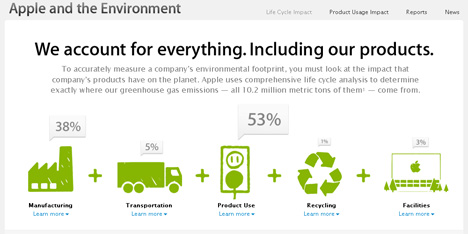
Example: Apple
Transparency, honesty and responsibility are “givens” in todays world, and Apple has pulled back the curtain to reveal their own actions in very rational and simple ways, demonstrating that their behaviors align with those of the consumer and their actions really do speak louder than words.
4) BRAND LEADERS HELP PEOPLE REALIZE THEIR DREAMS BY EMPOWERING THEM TO SHARE.
Every consumer has the power to be a rock star, thanks to technologies like YouTube and GoPro. Documenting and sharing everyday events makes people feel more important and powerful, and has quickly become the norm. Brand leaders are providing a new set of tools to fuel and support the ability to share experiences through visual media, creating a new social currency.
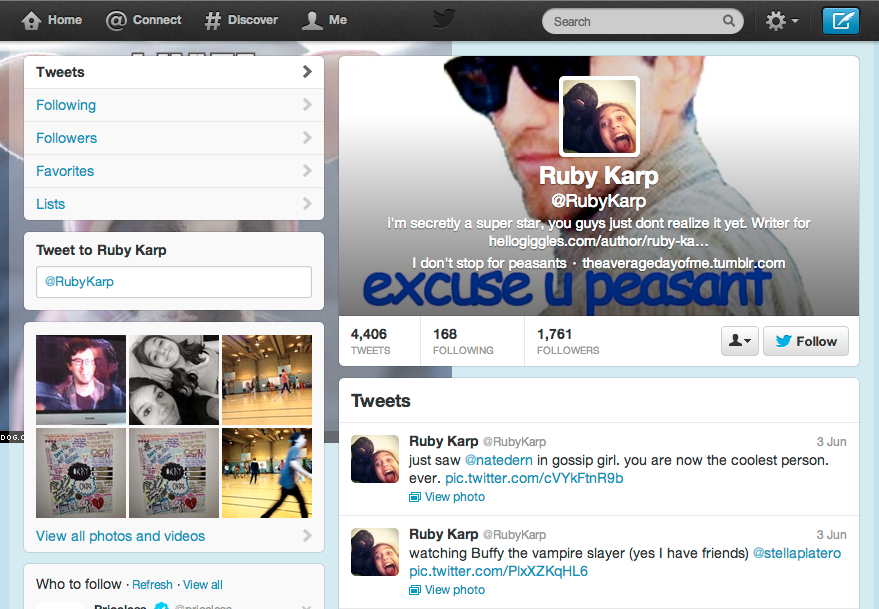
Example: Twitter and Weibo
Hyper-connectivity enables not just creative collaboration, but also story sharing with a broad audience. Some stories are entertaining, some are irrelevant (“I had pancakes for breakfast!”), but some can effect powerful social change. Twitter and Weibo offer outlets for otherwise marginalized communities to tell their stories to the world, joining the “global conversation”, giving rise to the individual hero expressing his or her own voice. Unlike previous generations, people no longer need to rely on the voices of others to tell stories or to unite communities; brand leaders fuel each consumer’s personal ability to share their own stories in their own voices.
5) BRAND LEADERS HELP PEOPLE REALIZE THEIR DREAMS BY PROVIDING TOOLS THAT TRANSFORM DATA INTO PERSONAL INSIGHT.
When data is distilled into visible tools, desires and aspirations become attainable realities. By making information more visual and accessible to consumers, simple yet engaging tools provide personalized information which better informs people’s ability to make decisions.
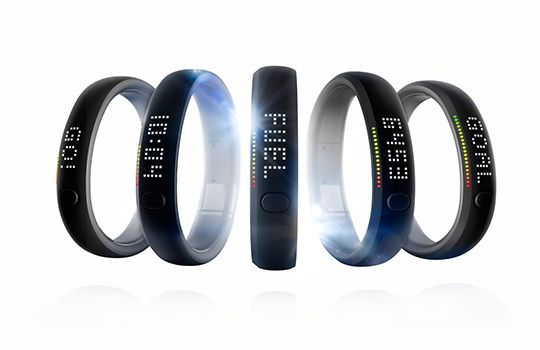
Example: Nike Fuel
Technology just got personal. By turning your daily routine into a stream of helpful, understandable data, Nike Fuel enables consumers to make the decisions needed to achieve their goals. Today’s consumer fully believes they are capable of achieving more than previous generations thought was possible and we now see a newly empowered set of global consumers using digital tools to create bite-sized, digestible goals to make and track progress towards bigger desires and achievements.
What’s the overall takeaway?
Brand leaders are now expected to behave and act differently in response to the changes in how consumers see themselves. To be a brand leader, you must support the values of the consumer and help them realize their own dreams. Simply inspiring people is no longer enough. This is especially important as we consider the growth of entrepreneurial brands and how they are shifting the global landscape and changing how we live.
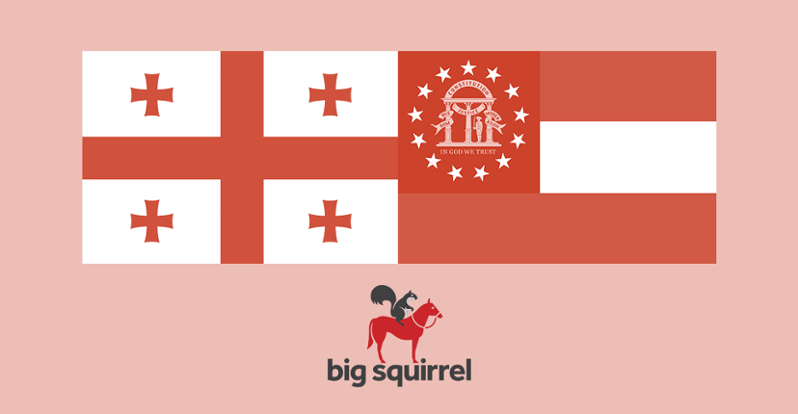
![]()



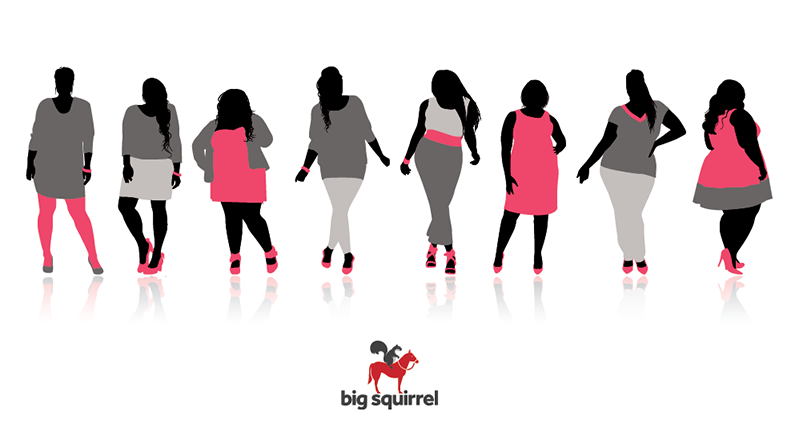
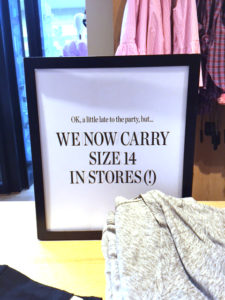 Lately it seems like everyone is jumping on the plus sized bandwagon. With mainstream clothing brands like JCrew expanding the sizes they carry in store (and posting apologetic notes about it) to mid-market brands like Target creating their own plus line of clothing, brands and retailers of all kinds are trying to clue in to the needs of a dramatically underserved market. Since plus apparel is a rapidly growing area of retail —
Lately it seems like everyone is jumping on the plus sized bandwagon. With mainstream clothing brands like JCrew expanding the sizes they carry in store (and posting apologetic notes about it) to mid-market brands like Target creating their own plus line of clothing, brands and retailers of all kinds are trying to clue in to the needs of a dramatically underserved market. Since plus apparel is a rapidly growing area of retail — 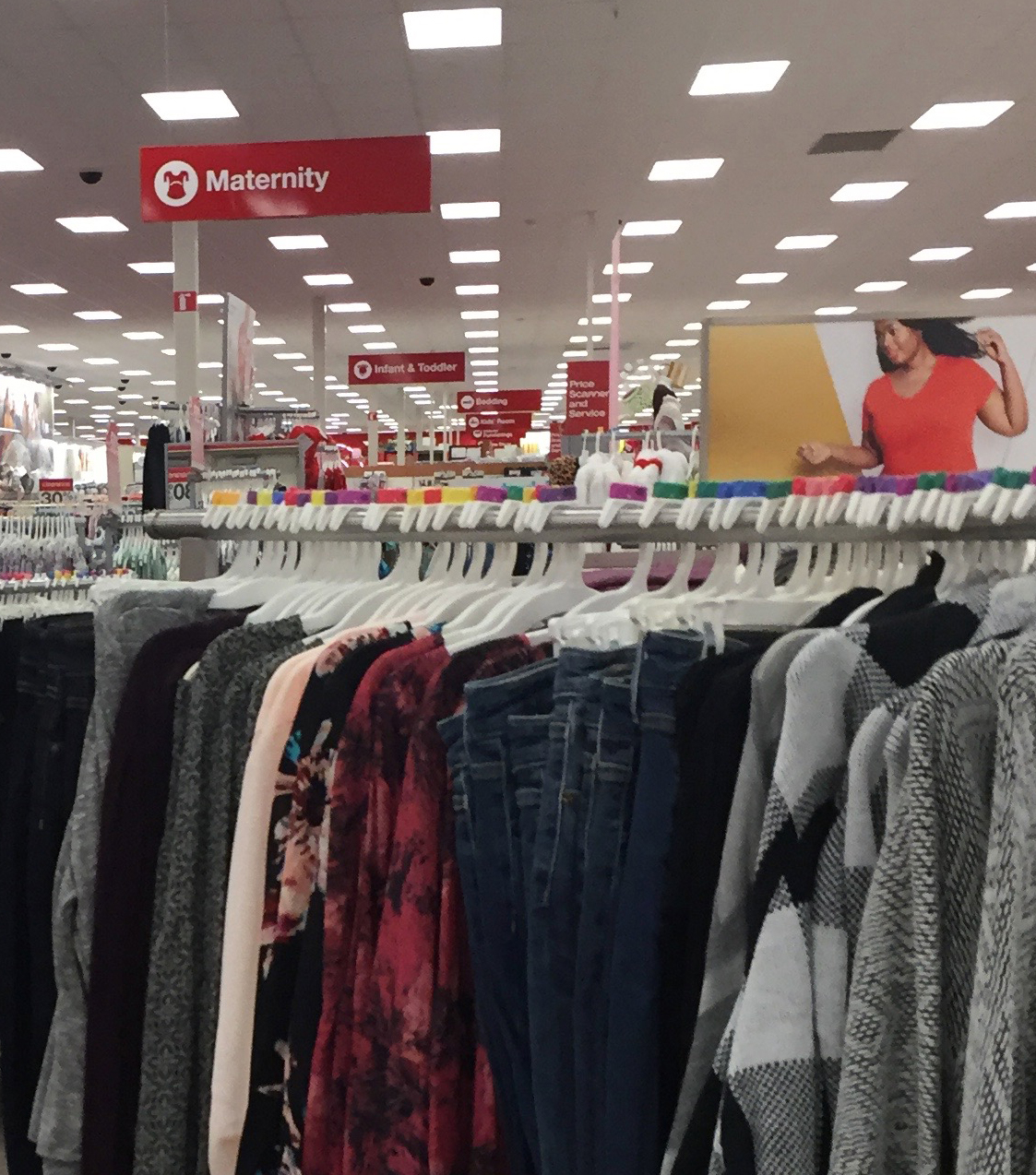
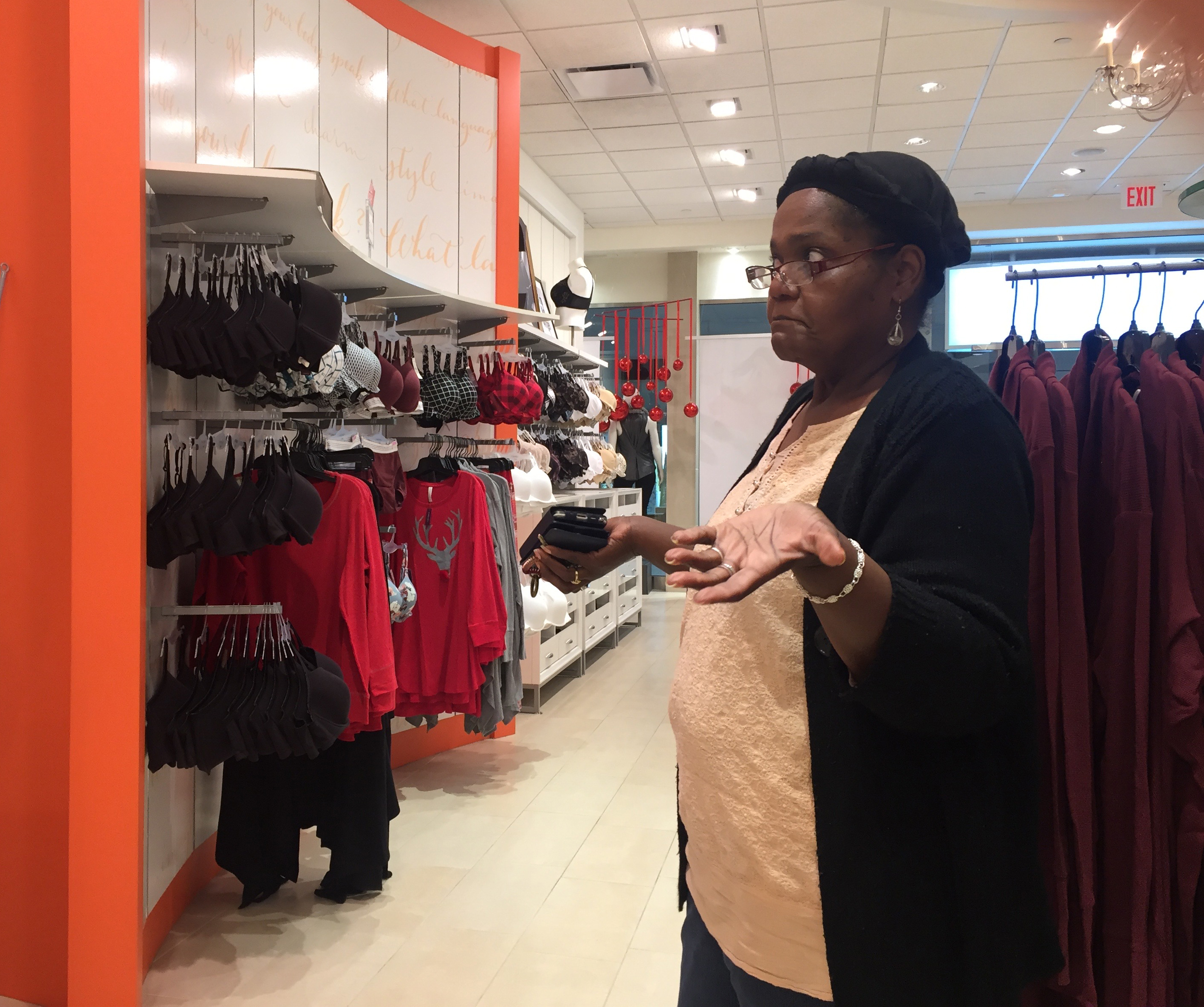

 Example: Nutrition Progress Report
Example: Nutrition Progress Report 

 Example: Ronald McDonald House Charities
Example: Ronald McDonald House Charities 
 Example: Hamburger University
Example: Hamburger University 
 Example: Menu expansion
Example: Menu expansion  Example: My Meal Builder & McDonald’s App
Example: My Meal Builder & McDonald’s App 

 Example: Square
Example: Square

